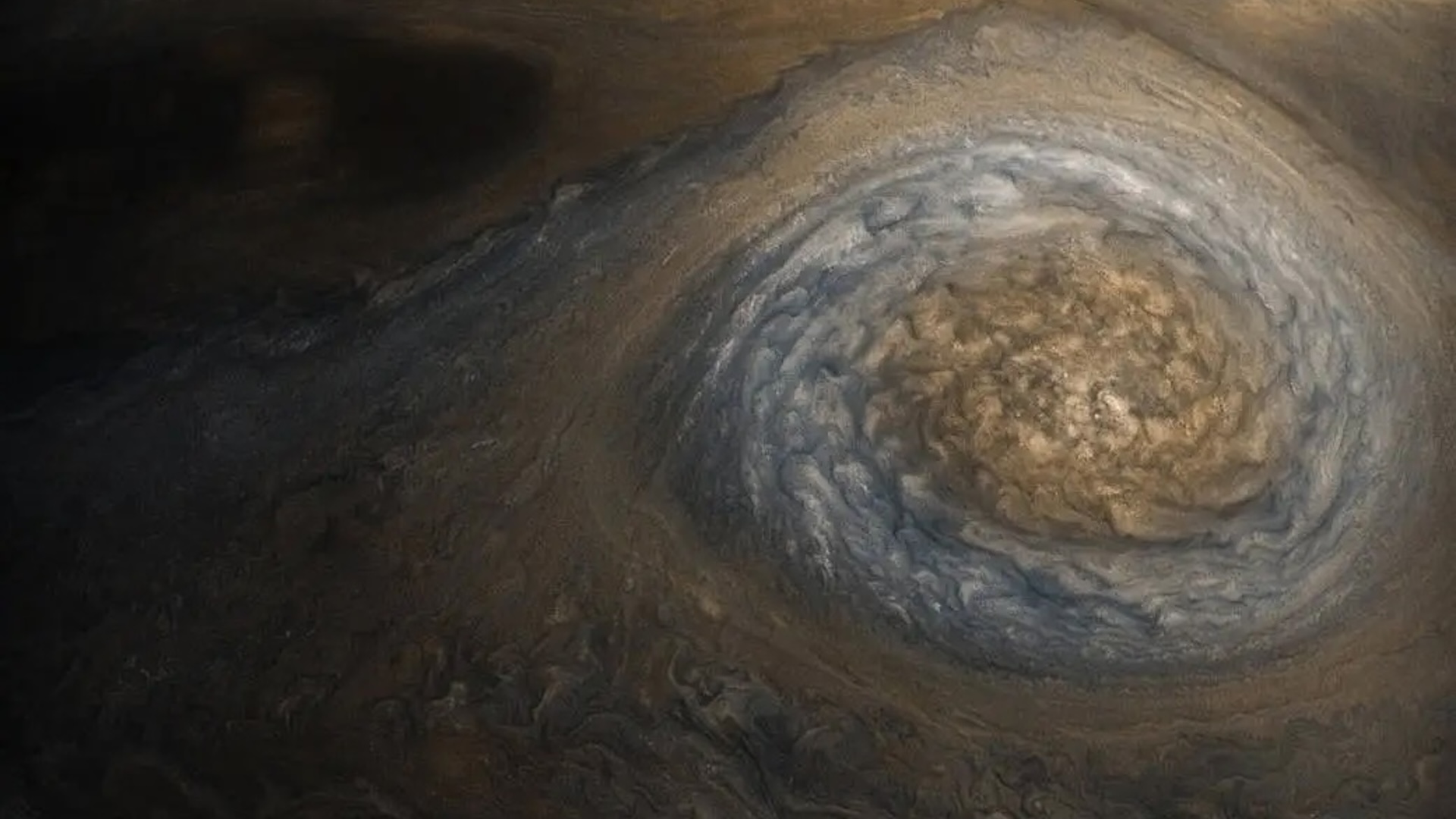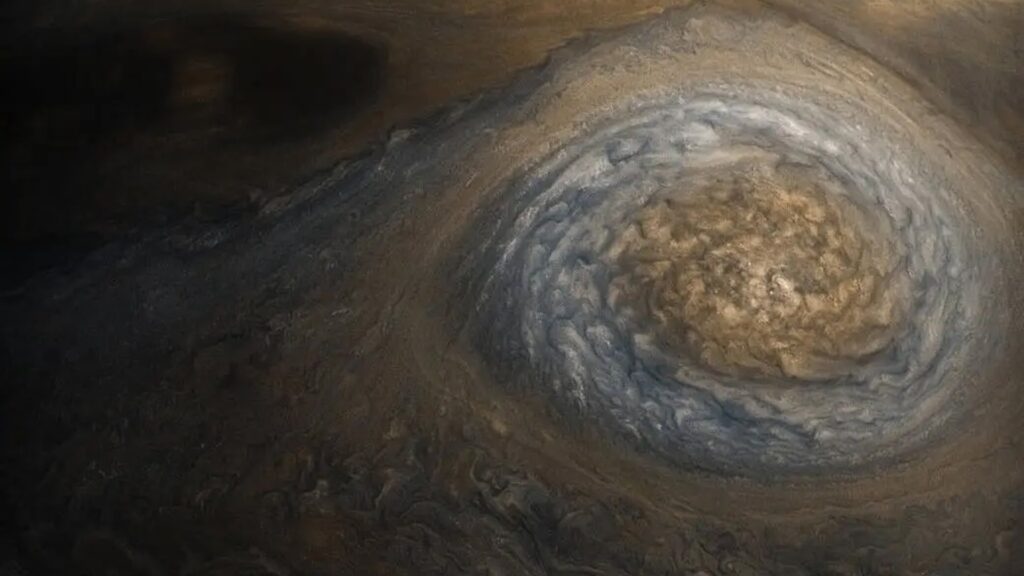
The weather forecast for Jupiter now includes softball-size hailstones, known as “mushballs,” that are brewed by violent thunderstorms raging in the planet’s turbulent atmosphere, a new study finds.
The findings confirm these bizarre, ammonia-rich mushballs are also the source of Jupiter’s missing ammonia. The absence of this gas in pockets of Jupiter’s atmosphere has perplexed scientists for years.
Decades ago, astronomers spotted intensely turbulent cloud tops in telescope images of the gas giant. The discovery led scientists to conclude that Jupiter‘s atmosphere churns and mixes constantly, like a pot of boiling water.
Yet recent data from Earth-based radio telescopes and NASA’s Juno spacecraft revealed deep pockets of missing ammonia — reaching 90 miles (150 kilometers) deep across all latitudes. This depletion is so significant in the planet’s atmosphere that no known mechanism could explain it.
Now, the new study’s analysis of the aftermath of a massive 2017 storm observed by Juno offers compelling evidence that Jupiter’s raging storms are the key to this atmospheric puzzle. The findings also reveal that even localized storms can strip ammonia from the planet’s upper atmosphere and plunge it unexpectedly deep, indicating that the long-held vision of a thoroughly mixed atmosphere swirling around Jupiter is an illusion.
“The top of the atmosphere is actually a pretty poor representation of what the whole planet looks like,” study lead author Chris Moeckel, a researcher in the Space Sciences Laboratory at the University of California, Berkeley, told Live Science. “As time goes by, we have to dig deeper and deeper into the atmosphere to find the place where it appears well-mixed.”
Moeckel and his colleagues described their findings in a study published March 28 in the journal Science Advances.
‘That’s the moment I conceded’
Because of the dense cloud cover blanketing Jupiter, scientists cannot directly observe what lies beneath the planet’s turbulent cloud tops. The role of ammonia is like a splash of color in a flowing stream of water, Moeckel said: It acts as a tracer, revealing otherwise-invisible patterns and processes deep within Jupiter’s atmosphere.
To explain the missing ammonia in Jupiter’s atmosphere, in 2020 scientists theorized that the planet’s violent storms generate strong updrafts that rapidly lift ammonia-rich ice particles to high altitudes, where they combine with water ice into a slushy liquid. Much like Earth’s hailstones, Jovian mushballs grow by accumulating ice layers as storm currents repeatedly cycle them, eventually reaching softball size and falling deep into Jupiter’s atmosphere, far below their origin. This process, the theory posited, left upper regions depleted of ammonia and water that Juno and ground-based telescopes detected.
A distinct signature within the radio observations beamed back by Juno confirmed that this exotic process is indeed occurring, the new study found. During its February 2017 flyby, the spacecraft passed over an active storm region, and its instruments showed a higher concentration of both ammonia and water nestled beneath the storm cloud.
“I was actually sitting at the dentist’s office waiting and I was playing with the code,” Moeckel said. “All of a sudden I saw a signal much deeper at the same location as the storm clouds were at the top, and I remember being like ‘Huh,’ I didn’t expect anything down here.”
The peculiar signal, which persisted even a month after the storm began, could only be explained by either a drop in temperature consistent with melting ice or an increase in ammonia concentration, which would occur if the ammonia within the mushballs was being released as they melted.
“Both theories led me to the same conclusion — the only known mechanism was these mushballs,” Moeckel said. “That’s the moment I conceded.”
The researchers suspect Jupiter is unlikely to be unique in this regard, as gases such as ammonia are swept into forming planets and are likely circulating in the atmospheres of hydrated gas giants both within our solar system and beyond.
“I won’t be surprised if this is happening throughout the universe,” Moeckel said.
